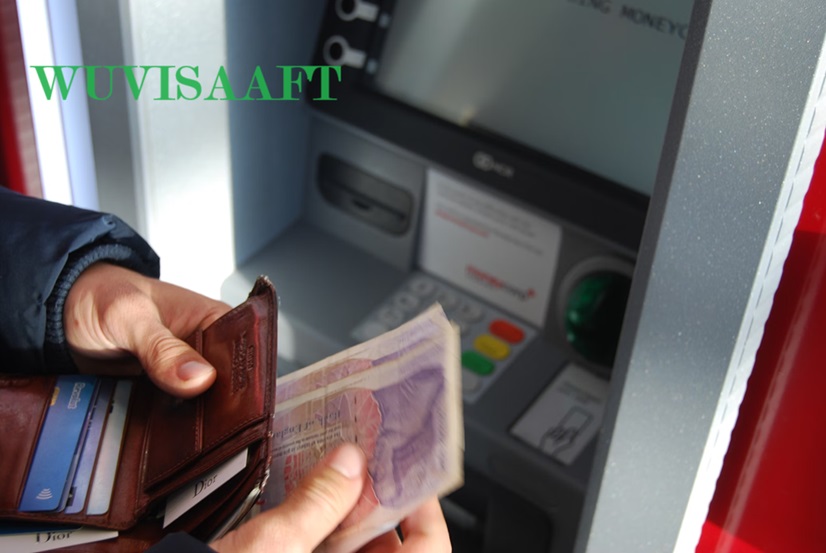
Decoding the WUVISAAFT Charge: Understanding Western Union
Introduction
Have you ever noticed a mysterious charge labeled “WUVISAAFT” on your bank statement? If so, you’re not alone. Many people find this cryptic acronym puzzling and even alarming. Understanding this charge is crucial not only for managing your finances but also for keeping your accounts secure. Let’s delve into the world of banking acronyms to demystify the WUVISAAFT charge and understand its significance on your bank statement.
What Does WUVISAAFT Stand For?
First things first, let’s break down the acronym. “WUVISAAFT” is not a common term outside the realm of banking, which can make seeing it on your statement a cause for concern. Here’s the breakdown:
- WU: Western Union
- VISA: VISA Inc.
- AFT: Automated Funds Transfer
So, when combined, “WUVISAAFT” translates to “Western Union VISA Automated Funds Transfer.” This sheds some light on the nature of the charge, indicating that it involves a transaction facilitated by Western Union through VISA’s automated system.
Understanding Western Union
Western Union is a well-established financial services company known for its money transfer services. It allows people to send and receive money worldwide, especially in areas where traditional banking may not be available or convenient. Many people rely on Western Union’s services to send money to family members abroad, make urgent payments, or even transfer funds domestically. The company’s extensive network and reliability have made it a go-to solution for quick and secure money transfers.
The Role of VISA
VISA Inc. is one of the world’s largest payment technology companies, providing the infrastructure for electronic funds transfers globally. It enables transactions using VISA-branded credit, debit, and prepaid cards. When you make a payment with a VISA card, whether online or in person, VISA’s network ensures that the money moves securely and efficiently from your account to the merchant’s account. VISA’s vast and secure payment processing capabilities make it a trusted partner for many financial institutions and services, including Western Union.
Putting It Together: A Closer Look at WUVISAAFT
Now that we know “WUVISAAFT” involves both Western Union and VISA, let’s explore when this charge might appear on your bank statement:
- International Money Transfers: If you’ve recently sent money internationally through Western Union using a VISA card, the “WUVISAAFT” charge could be the associated fee for this service. Western Union often partners with major card networks like VISA to process these transactions. The charge reflects the cost of the transfer.
- Receiving Funds: If you’ve received money through Western Union, the sender might have used a VISA card. In this case, the incoming funds could be linked to the “WUVISAAFT” charge, indicating the fee that Western Union deducted for processing the transfer.
- Online Purchases: Sometimes, online purchases made with a VISA card through Western Union’s platform can result in a “WUVISAAFT” charge. This scenario is common when buying goods or services from international merchants who prefer or exclusively use Western Union for payments.
- ATM Withdrawals: If you’ve used a VISA card at a Western Union-branded ATM, such as those found in convenience stores and airports, the “WUVISAAFT” charge might appear on your statement. These ATMs often charge convenience fees for withdrawals, which could be listed as “WUVISAAFT.”
What to Do If You See a WUVISAAFT Charge
Seeing an unknown charge on your bank statement can be unsettling. However, there are steps you can take to clarify the situation and ensure your account is secure:
- Review Recent Transactions: Take a closer look at your recent transactions to see if there are any corresponding payments or receipts that align with the “WUVISAAFT” charge. This can help you identify the source of the transaction.
- Contact Your Bank: If you’re still unsure about the charge, reach out to your bank’s customer service. They can provide specific transaction details, including the date, amount, and origin of the charge. Banks are also equipped to assist with any unauthorized charges and guide you on the next steps.
- Check with Western Union: If you suspect the charge is related to a Western Union transaction, their customer service can provide clarification. They can confirm if the charge is legitimate and offer additional transaction details if necessary.
- Dispute Unauthorized Charges: If you believe the “WUVISAAFT” charge is unauthorized or fraudulent, notify your bank immediately. Most banks have procedures for disputing charges and can guide you through the process of securing your account.
Tips for Secure Transactions
To avoid confusion and potential fraud related to charges on your bank statement, follow these tips for safe financial transactions:
- Keep Records: Save receipts, confirmation emails, and transaction numbers for all your financial transactions. These documents can serve as references if you encounter discrepancies on your statement.
- Monitor Your Accounts: Regularly check your bank statements and transaction history online. Quick detection of unauthorized charges can help prevent further issues and potential financial loss.
- Use Trusted Platforms: When sending money or making purchases online, use reputable and secure platforms. Look for secure payment symbols, such as the padlock icon in the address bar, to ensure the website is secure.
- Be Cautious with Personal Information: Avoid sharing sensitive financial information unless you are certain of the recipient’s legitimacy. Scammers often target individuals through phishing emails and fraudulent websites, so remain vigilant.
Conclusion
The “WUVISAAFT” charge on your bank statement may seem confusing at first, but understanding its origins can provide clarity. It typically represents a fee for an international money transfer, an online purchase, or an ATM withdrawal involving Western Union and VISA’s automated funds transfer system.
If you encounter this charge and have questions or concerns, don’t hesitate to reach out to your bank or Western Union for assistance. By staying informed and vigilant, you can manage your financial transactions with confidence and security, ensuring that your accounts remain safe and your finances are well-managed.





